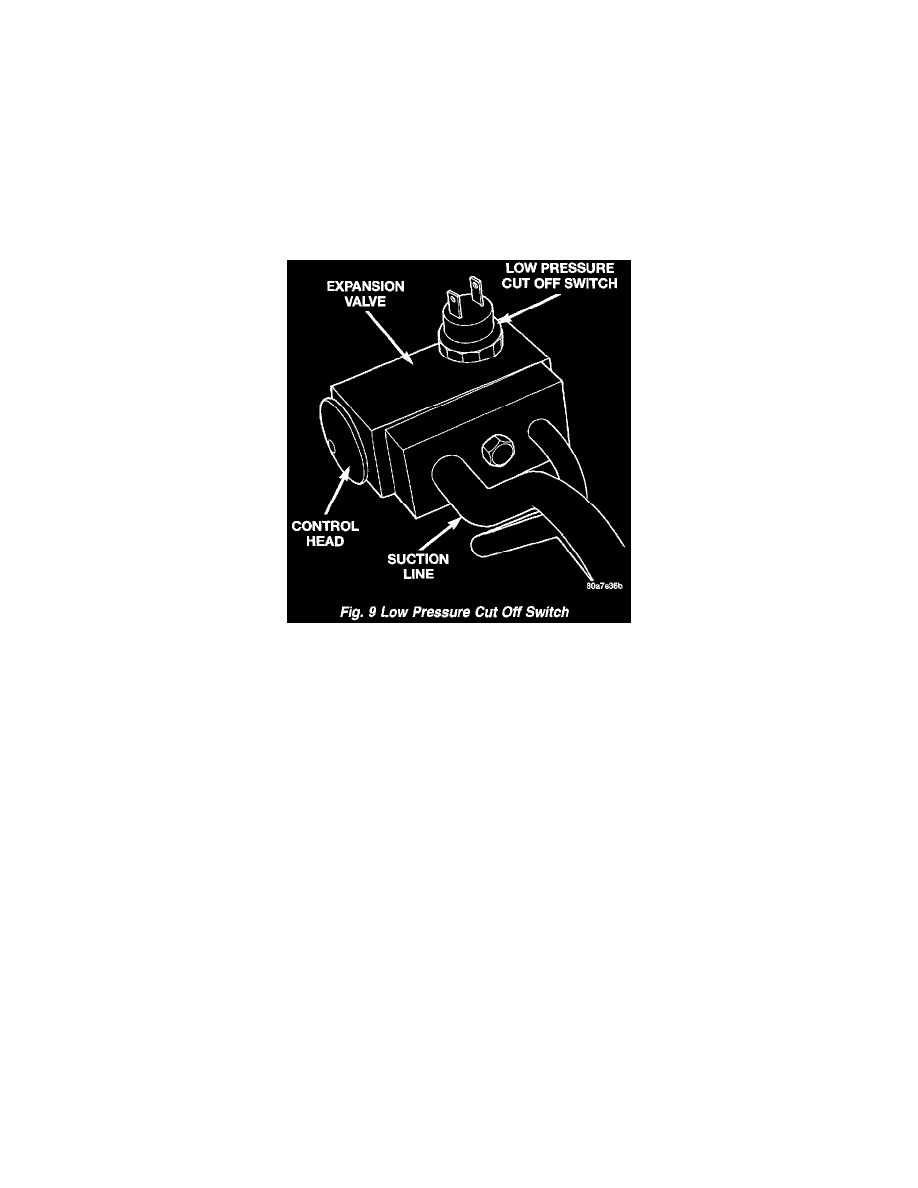Neon L4-2.0L VIN C (1997)

Expansion Valve: Testing and Inspection
NOTE: Expansion valve tests should be performed after compressor tests.
NOTE: Liquid CO2 is required to test the expansion valve. It is available from most welding supply facilities. CO2 is also available from companies
which service and sell fire extinguishers.
WARNING: Review Safety Precautions and Warnings Before proceding.
CAUTION: The work area and vehicle must be 21 ° to 27 °C (70 ° to 85 °F) when testing expansion valve.
TO TEST THE EXPANSION VALVE:
1. Connect a charging station or manifold gauge set to the refrigerant system service ports.
Low Pressure Cut Off Switch
2. Disconnect wire connector at low pressure cutoff switch. Using a jumper wire, jump terminals inside wire connector boot.
3. Close all doors, windows and vents to the passenger compartment.
4. Set Heater-A/C control to A/C, full heat, floor, RECIRC. and high blower.
5. Start the engine and hold the idle speed (1000 rpm). After the engine has reached running temperature, allow the passenger compartment to heat
up. This will create the need for maximum refrigerant flow into the evaporator.
6. If the refrigerant charge is sufficient, discharge (high pressure) gauge should read 965 to 2620 kPa (140 to 380 psi). Suction (low pressure) gauge
should read 103 to 2417 kPa (15 to 35 psi). If system cannot achieve proper pressure readings, replace the expansion valve. If pressure is correct,
proceed with test.
WARNING: Protect skin and eyes from contacting CO2, personal injury can result.
7. If suction side low pressure is within specified range, freeze the expansion valve control head for 30 seconds. Use a super cold substance (liquid
C02). Do not spray refrigerant on the expansion valve for this test. Suction side low pressure should drop to 34.5 kPa (5 psi) If not, replace
expansion valve.
8. Allow expansion valve to thaw. The low pressure gauge reading should stabilize at 103 to 241 kPa (15 to 35 psi). If not, replace expansion valve.
9. When expansion valve test is complete, test A/C overall performance. Refer to Testing and Inspection/Performance Test. Remove all test
equipment before returning vehicle to use.
